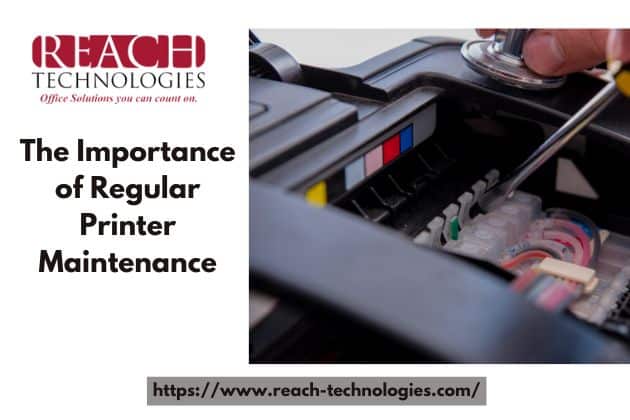Printers are the unsung workhorses of modern businesses. They churn out reports, contracts, invoices, and presentations, keeping operations seamless. Yet, they are often neglected—only noticed when they malfunction. Regular maintenance is not just a luxury; it’s a necessity for any organization that values efficiency, cost savings, and longevity in its equipment.
Preventing Costly Downtime
Few things bring workflow to a grinding halt like a malfunctioning printer. A simple paper jam or toner leakage can delay critical tasks, leading to frustration and lost productivity. Unscheduled repairs can be expensive, often surpassing the cost of preventive maintenance. By scheduling regular check-ups, businesses can avoid sudden disruptions, ensuring that their printing infrastructure remains reliable.
Enhancing Print Quality
Over time, dust, debris, and dried ink accumulate inside a printer, leading to streaks, smudges, and faded prints. These imperfections not only look unprofessional but may also render documents unreadable. Routine maintenance ensures that print heads are clean, cartridges are properly installed, and alignment remains precise, resulting in crisp and clear output every time.
Extending Equipment Lifespan
Printers, like any mechanical device, experience wear and tear. Without regular maintenance, minor issues can escalate, leading to premature equipment failure. Preventative care—such as cleaning rollers, replacing worn-out parts, and ensuring proper calibration—prolongs the lifespan of a printer, delaying the need for costly replacements.
Reducing Operational Costs
Frequent breakdowns lead to repair costs that can quickly accumulate. Additionally, poorly maintained printers consume excessive toner or ink, increasing supply expenses. Proactive servicing minimizes these unnecessary costs by optimizing efficiency, preventing waste, and reducing the likelihood of expensive emergency repairs.
Improving Energy Efficiency
A neglected printer works harder than it should, consuming more energy and generating unnecessary heat. Dust-clogged fans, inefficient rollers, and misaligned components strain the system, leading to higher power consumption. Routine maintenance ensures that printers run smoothly, reducing energy waste and lowering utility bills.
Minimizing Paper Waste
Misfeeds, double printing, and alignment issues contribute to unnecessary paper waste, increasing operational expenses and harming the environment. Regular printer maintenance helps detect and correct these issues, ensuring that each page printed serves its intended purpose without wastage.
Strengthening Cybersecurity
Modern printers are more than just output devices; they are network-connected computers susceptible to cyber threats. Firmware updates, security patches, and routine inspections help protect sensitive information from unauthorized access. Ignoring maintenance could leave printers vulnerable to hacking, data breaches, or malware infiltration.
Conclusion
A well-maintained printer is an asset, not a liability. Regular maintenance ensures uninterrupted workflow, optimal print quality, extended lifespan, and cost efficiency. It’s an investment in productivity and reliability. Businesses that prioritize printer upkeep will find themselves saving time, money, and frustration in the long run.

